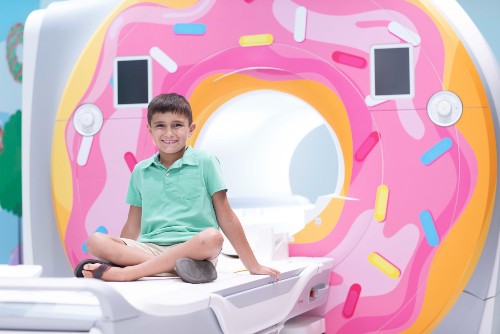Pediatricians might order an MRI (Magnetic Resonance Imaging) for your child; at first, it might seem like an extensive, scary procedure, but it is one of the most common diagnostic procedures they order for young patients. Often times a sedated MRI is helpful for children.
An MRI is a non-invasive test that uses powerful magnets and radio waves to create detailed images of the body’s internal structures. It is essential in diagnosing conditions such as brain tumors, spinal cord injuries, and musculoskeletal disorders.
However, performing an MRI on young children, especially those who are anxious, have claustrophobia, or have trouble staying still, can be challenging. In such cases, a sedated MRI is often recommended.
So, What is a Sedated MRI?
A sedated MRI is performed on a child given a mild sedative before the procedure to help them relax and stay still. Sedation allows the child to be more comfortable during the process and reduces the movement, affecting the image quality. It also makes the procedure less stressful for both the child and the parent.
Before the procedure, the child’s medical history will be reviewed to determine if sedation is necessary and safe. A physical exam will also ensure the child is healthy enough to undergo the sedation.
The sedative is typically administered orally or intravenously, depending on the child’s age, weight, and medical history. The sedative will take effect within 30 minutes to an hour; during this time, the child will start feeling sleepy and relaxed.
What Happens During the MRI?
During the MRI procedure, the child will lie on a table that slides into the machine. The child’s vital signs will be monitored throughout the procedure to ensure their safety. A pediatric MRI technician will also be present to operate the machine and help keep the child calm and comfortable.
After the procedure, the child will be monitored until the sedative wears off. Depending on the type of sedative used, the child may feel sleepy or groggy for several hours. In some cases, the child may be required to stay in the hospital for a short period for monitoring.
Overall, a sedated MRI can be a safe and effective way to help diagnose various medical conditions in children. If your child’s pediatrician has recommended an MRI, don’t hesitate to ask about the possibility of a sedated MRI if you have concerns about your child’s ability to stay still during the exam.








